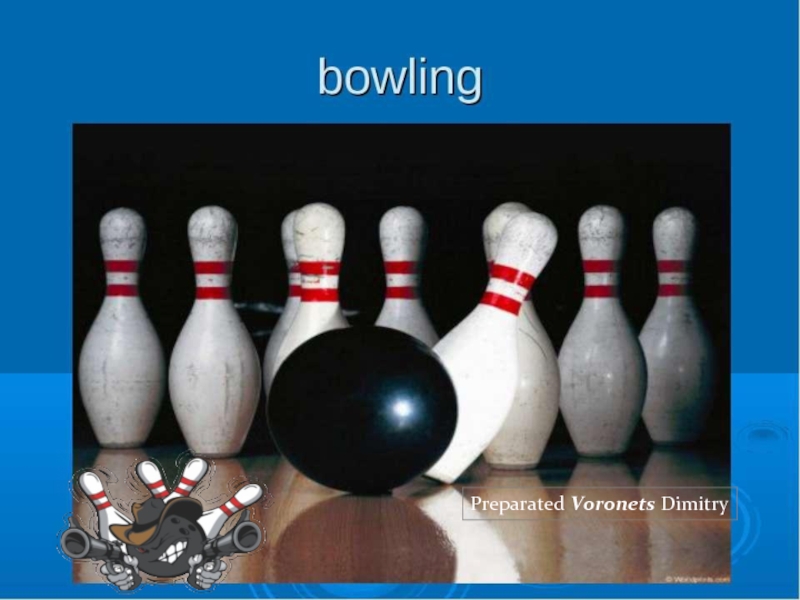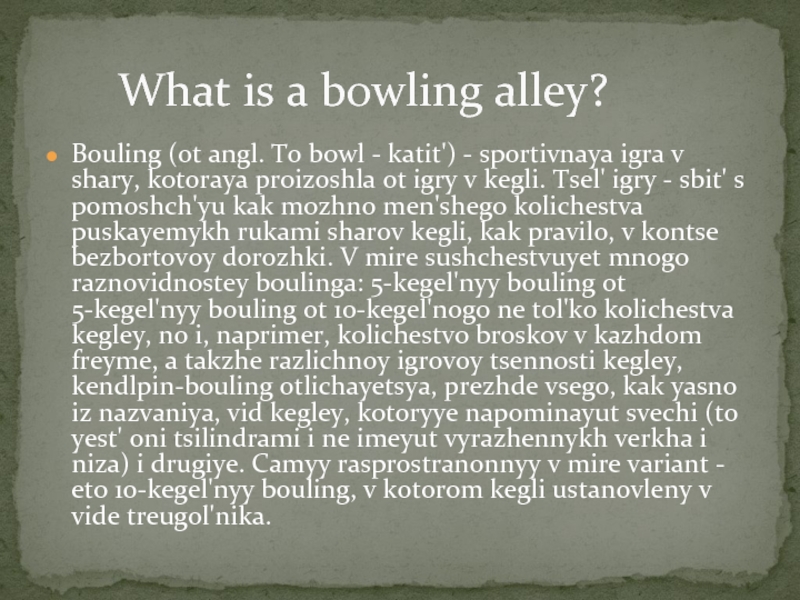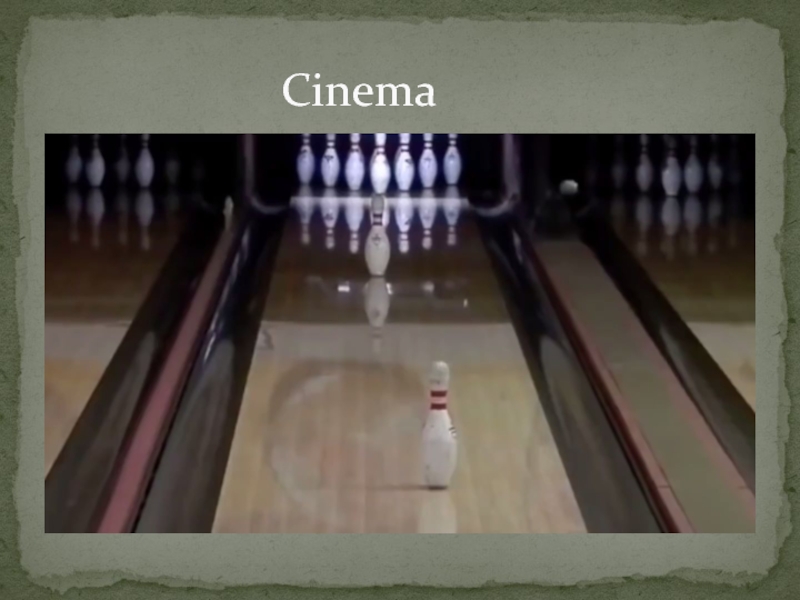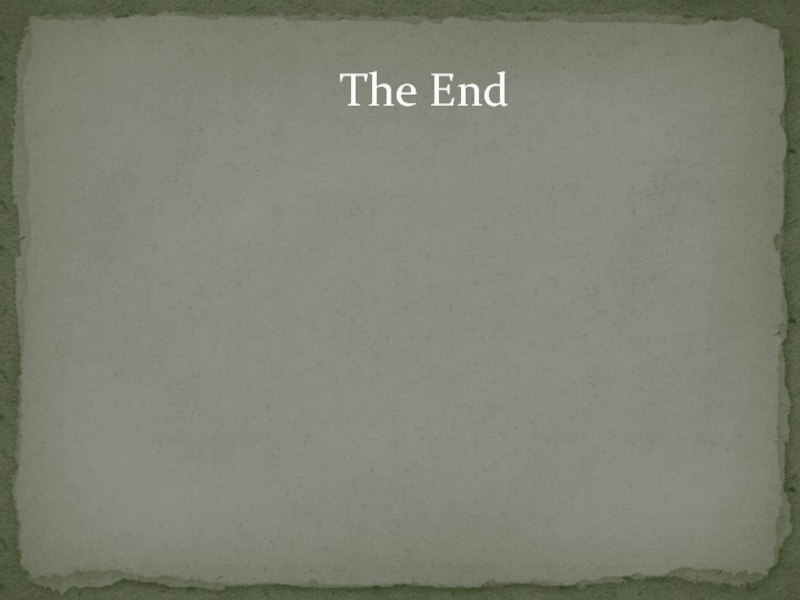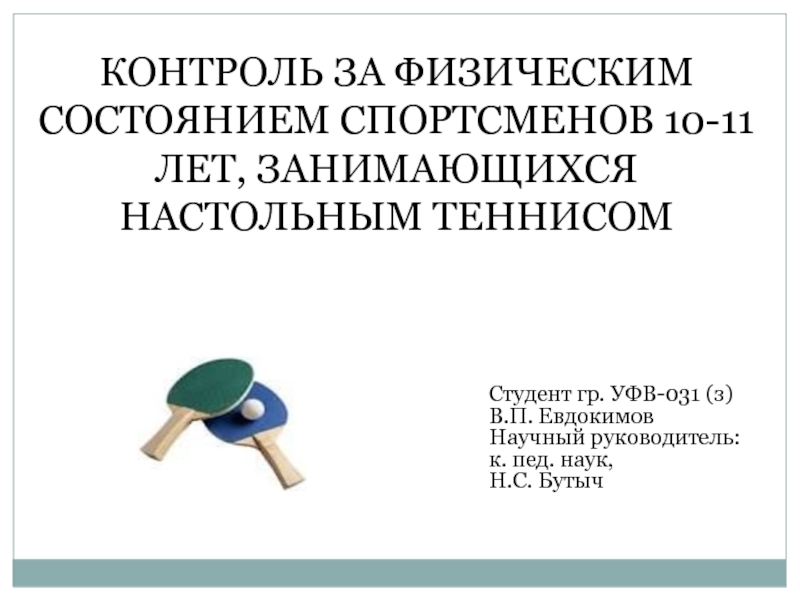- Главная
- Разное
- Дизайн
- Бизнес и предпринимательство
- Аналитика
- Образование
- Развлечения
- Красота и здоровье
- Финансы
- Государство
- Путешествия
- Спорт
- Недвижимость
- Армия
- Графика
- Культурология
- Еда и кулинария
- Лингвистика
- Английский язык
- Астрономия
- Алгебра
- Биология
- География
- Детские презентации
- Информатика
- История
- Литература
- Маркетинг
- Математика
- Медицина
- Менеджмент
- Музыка
- МХК
- Немецкий язык
- ОБЖ
- Обществознание
- Окружающий мир
- Педагогика
- Русский язык
- Технология
- Физика
- Философия
- Химия
- Шаблоны, картинки для презентаций
- Экология
- Экономика
- Юриспруденция
Bowling rules презентация
Содержание
Слайд 3Bouling (ot angl. To bowl - katit') - sportivnaya igra v
shary, kotoraya proizoshla ot igry v kegli. Tsel' igry - sbit' s pomoshch'yu kak mozhno men'shego kolichestva puskayemykh rukami sharov kegli, kak pravilo, v kontse bezbortovoy dorozhki. V mire sushchestvuyet mnogo raznovidnostey boulinga: 5-kegel'nyy bouling ot 5-kegel'nyy bouling ot 10-kegel'nogo ne tol'ko kolichestva kegley, no i, naprimer, kolichestvo broskov v kazhdom freyme, a takzhe razlichnoy igrovoy tsennosti kegley, kendlpin-bouling otlichayetsya, prezhde vsego, kak yasno iz nazvaniya, vid kegley, kotoryye napominayut svechi (to yest' oni tsilindrami i ne imeyut vyrazhennykh verkha i niza) i drugiye. Camyy rasprostranonnyy v mire variant - eto 10-kegel'nyy bouling, v kotorom kegli ustanovleny v vide treugol'nika.
What is a bowling alley?
Слайд 4The bowling game itself follows the ten pins system and consists
of ten frames. Now the ball is automatically fed to the player, but before the machine for automatic feeding of the pins and the bowl, the skittles were manually installed. For this there was even a special post - pin-fight - from the English word pin-pin. The player throws two balls in each of the first nine frames, unless the strike is first strike (when all the pins are knocked off at the first throw of the ball), the strike is estimated at 10 points plus the number of pins shot down by the player for the next two ball throws. If the strike does not happen, then the player is credited so many points, how many pins he knocked. In the tenth frame, the player throws three balls if the strike is counted.
The throw of the ball must be done manually only. Scoring takes place at each throw of the ball. Except when a strike occurs during the first throw, the number of pins knocked down by the player at the first throw of the ball is marked in a small square in the upper left corner of the corresponding frame on the monitor, and the number of kegs knocked down by the player at the second ball throw is marked in the square in the upper right corner frame. If none of the pins in the frame are knocked down on the second throw of the ball, a dash is placed in the scoring field. The total score for two attempts is counted and displayed on the monitor immediately. The winner is the one who scored the most points.
The throw of the ball must be done manually only. Scoring takes place at each throw of the ball. Except when a strike occurs during the first throw, the number of pins knocked down by the player at the first throw of the ball is marked in a small square in the upper left corner of the corresponding frame on the monitor, and the number of kegs knocked down by the player at the second ball throw is marked in the square in the upper right corner frame. If none of the pins in the frame are knocked down on the second throw of the ball, a dash is placed in the scoring field. The total score for two attempts is counted and displayed on the monitor immediately. The winner is the one who scored the most points.
Bowling Rules
Слайд 5The history of bowling is rooted in antiquity. Prototypes of balls
and pins were discovered by archaeologists on excavations of Ancient Egypt and date back to 5200 BC. In the tomb were found several small stone balls, three pieces of marble and nine thin pins. Sir Finders Petrie, professor of Egyptology at the University of London, in his monograph "The Making of Egypt" (1939) suggested that the ball had to be thrown through a gate made of pieces of marble. The goal was nine pins, arranged in the shape of a diamond. Thus, the first player in the 9-bowling bowling could have thrown the ball over 7,000 years ago.
Even the kings played bowling. It is said that King Edward III put the bowling out of the law, because his troops, because of the bowling enthusiasm, reduced the archery performance! And almost certainly bowling was popular in England during the time of King Henry VIII.
By that time there were many variants of the game in "skittles", as well as games in which balls were thrown into other objects. This indicates that the game has evolved over time.
One of the most unusual types of game exists so far in Edinburgh. The player swings a smooth, sandwiched ball between the legs without holes and throws it into pins. During such a throw, the player falls on his belly on the track. In Western Europe there are still many variants of the game with nine pins. The roots of bowling can be traced in the Italian game "bocce", in the French game "petanque", as well as in the British bowling on the lawn.
In Germany in the 4th century. n. e - bowling was part of a religious ceremony. It was said that someone who knows how to knock down skittles has a good character. On someone who missed, lay penance. Even Martin Luther played bowling. British kings Edward II and Richard II banned bowling because they believed that people waste too much time for this game. However, Sir Francis Drake played bowling before heading to the war against the Spanish Armada.
Bowling is popular in America since the colonial times. The English played bowling on the grass, but the Germans introduced a nine-pin bowling alley, an ancient game that transformed into a modern ten-pin bowling alley.
In the 19th century, the leading players in bowling, wishing to play in accordance with the standards, decided that the sport needed a set of standard rules. In 1895, they first held the American Bowling Congress. And in 1916 the first Women's International Bowling Congress took place. In Russia, the "League of Bowling" has been popularizing and developing this sport since 1996
In Russia, the first bowling center was equipped in Moscow in the hotel "Cosmos" in the late 70's.
At the moment, Russia is one hundred and tenth member of the International Bowling Federation in the world, and Bowling Federation in Russia is directly involved in the Federation of Sport Bowling in Russia. In the regions there are federations of sports bowling, reporting to the center in Moscow. All regional federations without exception carry out tournaments and bowling championships with this or that periodicity.
Even the kings played bowling. It is said that King Edward III put the bowling out of the law, because his troops, because of the bowling enthusiasm, reduced the archery performance! And almost certainly bowling was popular in England during the time of King Henry VIII.
By that time there were many variants of the game in "skittles", as well as games in which balls were thrown into other objects. This indicates that the game has evolved over time.
One of the most unusual types of game exists so far in Edinburgh. The player swings a smooth, sandwiched ball between the legs without holes and throws it into pins. During such a throw, the player falls on his belly on the track. In Western Europe there are still many variants of the game with nine pins. The roots of bowling can be traced in the Italian game "bocce", in the French game "petanque", as well as in the British bowling on the lawn.
In Germany in the 4th century. n. e - bowling was part of a religious ceremony. It was said that someone who knows how to knock down skittles has a good character. On someone who missed, lay penance. Even Martin Luther played bowling. British kings Edward II and Richard II banned bowling because they believed that people waste too much time for this game. However, Sir Francis Drake played bowling before heading to the war against the Spanish Armada.
Bowling is popular in America since the colonial times. The English played bowling on the grass, but the Germans introduced a nine-pin bowling alley, an ancient game that transformed into a modern ten-pin bowling alley.
In the 19th century, the leading players in bowling, wishing to play in accordance with the standards, decided that the sport needed a set of standard rules. In 1895, they first held the American Bowling Congress. And in 1916 the first Women's International Bowling Congress took place. In Russia, the "League of Bowling" has been popularizing and developing this sport since 1996
In Russia, the first bowling center was equipped in Moscow in the hotel "Cosmos" in the late 70's.
At the moment, Russia is one hundred and tenth member of the International Bowling Federation in the world, and Bowling Federation in Russia is directly involved in the Federation of Sport Bowling in Russia. In the regions there are federations of sports bowling, reporting to the center in Moscow. All regional federations without exception carry out tournaments and bowling championships with this or that periodicity.
The history
